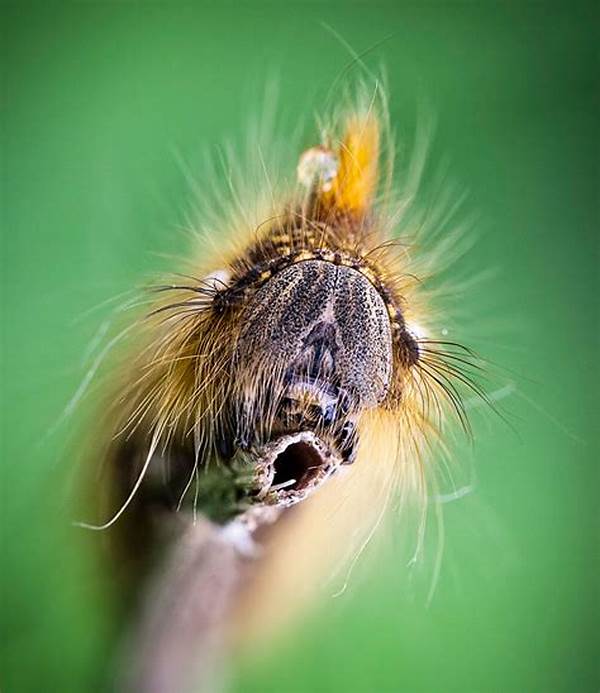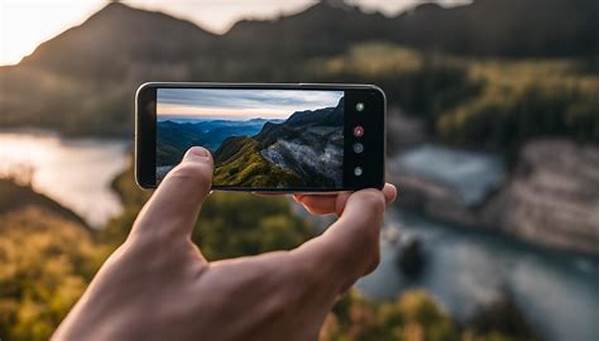Hey there, photography enthusiasts! If you’ve ever marveled at close-up shots showcasing the intricate details of a flower or the wings of a butterfly, then you’ve appreciated the beauty of macro photography. But achieving that level of clarity and detail requires more than just a good camera—it’s all about the lighting! Let’s dive into the world of lighting tips specifically for macro photography. Grab your camera, and let’s shed some light on this fascinating subject!
Read Now : Before And After Photo Composition Tips
Understanding Natural Light in Macro Photography
One of the best lighting tips for macro photography is to utilize natural light to your advantage. Early morning and late afternoon, often referred to as the “golden hours,” deliver a soft, diffused glow that can highlight the smallest details without casting harsh shadows. When venturing out during these times, you’ll find that the natural light can wrap beautifully around your subjects, adding depth and dimension. Furthermore, cloudy days can serve as a natural diffuser, providing a soft, even light that’s perfect for eliminating those dreaded highlights.
When manipulating natural light, the position of your subject matters significantly. Always consider the direction of the light source; backlighting can create a magical halo effect around translucent subjects, while side lighting can enhance textures. Don’t shy away from using reflectors—these can bounce natural light back onto your subject, filling in shadows and giving your image a more balanced exposure. Altogether, mastering natural light can elevate your macro photography game to new heights.
While many prefer natural light, there are situations where a little added illumination can make all the difference. Reflectors and diffusers are indispensable tools in these cases. Reflectors can redirect light, whether it’s natural or artificial, to emphasize your subject, while diffusers soften the light, preventing overexposure. With these tools in your arsenal, you’re well on your way to capturing stunning macro images that stand out.
Essential Equipment for Macro Lighting
1. Ring Lights
Perfect for even lighting across your subject, ring lights are a favorite for macro photographers. They minimize shadows and highlight details, making them an essential addition to your gear based on effective lighting tips for macro photography.
2. LED Panels
Portable and versatile, LED panels provide consistent lighting, ideal for capturing vibrant macro shots in any setting. They give you control over both the intensity and direction of your light.
3. Flash Diffusers
Want to soften the harsh light from your camera flash? A flash diffuser is your best friend, helping you achieve a more balanced exposure.
4. Reflectors
A simple yet powerful tool, reflectors redirect light to where you need it most. They’re particularly useful on overcast days when you need a little extra glow.
5. Gels and Filters
Add these to your lighting setup to change the mood of your shots with different colors. Gels and filters are an exciting way to experiment with lighting tips for macro photography.
Overcoming Challenges in Macro Lighting
Lighting tips for macro photography often include overcoming some common challenges. For starters, finding the right balance between natural and artificial light can be tricky. You don’t want to overcomplicate the scene with too much of anything. With practice, blending the two sources can give you an impressive depth that pure natural or artificial lighting might miss.
Additionally, dealing with shadows is another hurdle. Macro photography is all about details, and strong shadows can obscure those precious textures and vibrant colors you’re aiming to capture. Employing diffusers and reflectors is an excellent way to manage these shadows, softening them without losing the essence of the shot. A little bit of shadow can add intrigue, but as the saying goes, moderation is key.
Finally, the stability of your light setup can’t be underestimated. Often, macro shots require a steady hand or tripod. Any slight movement can result in blurred images, especially when lights are involved. Ensuring that your light sources are stable and that your camera is steady will lead to those crisp, clear macro photographs we all aim to capture.
Practical Lighting Techniques for Amazing Macro Shots
1. Use a Softbox
A softbox can mimic the effect of a cloudy day, diffusing harsh light into a gentle glow. This is a staple in lighting tips for macro photography for beautifully soft pictures.
2. Create Depth with Shadows
Embrace some shadows to add depth and intrigue to your macros. Position your lights strategically, creating a contrast that highlights your subject’s textures.
3. Control Light with Snoots
A snoot helps you direct light exactly where you want it, blocking out any distractions. This laser-focus technique is perfect for creating dramatic, stand-out images.
4. Experiment with Backlighting
Place your light source behind the subject to create a striking silhouette effect. This adds drama and dimension to your macro photography.
Read Now : Best Settings For Wildlife Pictures
5. Use a Light Tent
To get a completely even light distribution with no harsh edges, a light tent is invaluable—perfect for small subjects that need uniform clarity.
6. Implement Bounce Cards
These cards help fill in unwanted shadows without altering the overall color or tone, proving to be a subtle yet effective part of lighting tips for macro photography.
7. Play with Color Gels
Add some vibrancy or mood variation by incorporating color gels over your light source. They can shift the atmosphere of the shot completely.
8. Combine Natural and Artificial Light
Balance the softness of natural light with artificial sources to achieve captivating compositions that draw viewers further into the world of your subject.
9. Utilize Light Modifiers
Customizing light intensity and spread with modifiers can improve your subject’s perceived texture and detail, guiding viewer focus where you want it.
10. Layer the Light
Simulate natural lighting by layering different light intensities and qualities. This technique gives a natural blend as it allows you to gradually feather the light across your subject.
Breaking Down the Light Setup for Macro Photography
Ready to take your macro photography light setup from standard to stellar? Let’s break down the process in a relatable way. Macro photography often calls for a more controlled lighting environment. This doesn’t mean you need a full studio setup; sometimes, a simple desk lamp paired with a few creative tools does the trick!
Start with assessing your needs. What kind of subject are you shooting? A dew-kissed spider web at dawn may benefit from soft ambient light, or maybe you want to capture the vivid colors of an insect’s wing, which might require a more concentrated, directional light source. At this stage, lighting tips for macro photography might include improvising with household items – such as paper towels for diffusion or aluminum foil for reflection!
Next, keep your setup flexible. The beauty of macro photography lies in its ability to capture unexpected moments, so your lighting should adapt quickly. Compact LED lights or portable reflectors can be life savers. Don’t hesitate to experiment with your angles – sometimes the most captivating shots come from light hitting subjects in unexpected ways. Every new angle you try counts as another step towards mastering lighting tips for macro photography, ensuring your pictures remain intriguing, vibrant, and ever evolving.
Exploring Creative Lighting in Macro Photography
Alright, let’s get a little creative, shall we? Lighting tips for macro photography aren’t just about techniques—they’re about vision and style. Let’s think outside the box and bring a bit of flair into our shots. Try adding a splash of color with gels or even using prisms to scatter the light. Imagine catching rainbow reflections on a tiny dewdrop or accentuating a ladybug’s red with some creative lighting.
You can also try mixing different light sources. Combine the warm glow of a lamp with the cool cast of a window light. This could result in a mesmerizing play of shadows and tones across your subject. The dance of warm and cool tones can make your images dynamic, adding depth to your work. These advanced but accessible lighting tips for macro photography can bring an artistic edge to your compositions.
Remember, it’s not just about what looks good but also about what tells a story. Lighting impacts the mood, drawing the viewer into the world you’re capturing. That’s the beauty of photography—it’s an ongoing experiment, an artistic expression where you define the rules. So grab your gear, experiment with some lighting magic, and let your creativity flow. Who knows? You might just discover a signature style all your own.
Conclusion: Mastering Lighting Tips for Macro Photography
There you have it—a crash course on lighting tips for macro photography that will have you capturing stunning close-up shots in no time! By understanding and experimenting with various lighting techniques, you can bring out the hidden beauty in the smallest of subjects. Whether you’re using natural light, artificial setups, or diving into creative combinations, each choice will influence your final image.
Remember, the key is to keep learning and practicing. Macro photography is an art that requires patience and precision, but with improved lighting techniques, the results can be profoundly rewarding. Each shot is a new opportunity, a chance to hone your skills and try out new ideas. So go ahead, take your inspiration into the field (or your backyard), and start capturing the breathtaking details of the world around us.
Happy shooting, fellow photographers!



